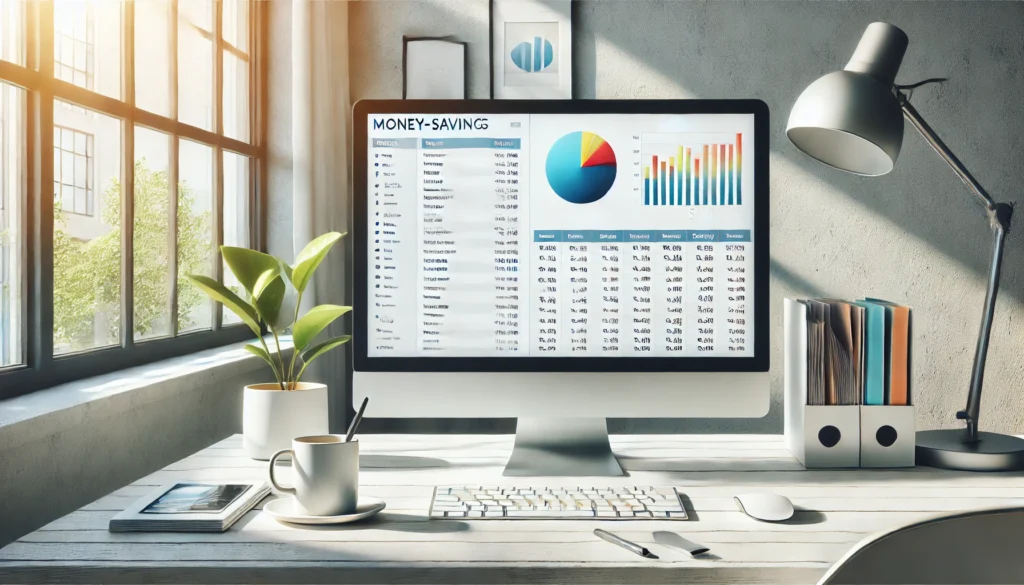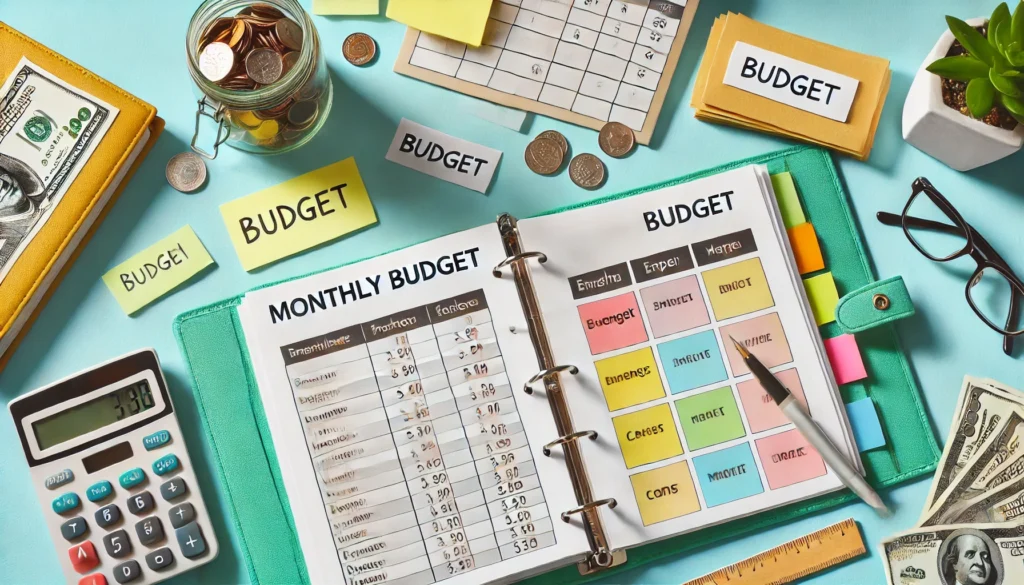Reimagining Budgeting: The Transformative Power of a Money Saving Sheet
Financial transformation doesn’t often begin with grand, sweeping decisions. More often, it starts with a simple tool—a money saving sheet. While digital banking apps and financial tech dominate the conversation today, the humble money saving sheet remains one of the most accessible, intuitive, and powerful tools in personal finance. It can serve as a monthly budget tracker, a decision-making guide, and a motivational dashboard that evolves with your financial journey. This article explores the profound impact a money saving sheet can have on a household’s finances and how it reinforces frugal living strategies that genuinely deliver results.
You may also like: 10 Genius Frugal Living Hacks: Effective Ways to Save Money on Household Bills
In an age where financial literacy is more important than ever, understanding where every dollar goes is not optional—it’s essential. Many people operate under vague assumptions about their spending habits, which leads to budgeting missteps and financial strain. A money saving sheet brings clarity and structure, providing not just a snapshot of expenses, but a dynamic portrait of your financial life. When paired with detailed nan analysis August September statements, this clarity becomes actionable. Tracking your monthly budget down to each penny can reveal spending leaks, uncover saving opportunities, and highlight priorities you didn’t even realize you had.
What distinguishes a truly effective money saving sheet is its ability to provide both granular and holistic views of your finances. While it captures small daily expenses, it also contextualizes those numbers within your broader monthly and annual goals. For frugal households, this means the sheet is more than just a ledger; it’s a strategic tool for lifestyle optimization. Whether you’re a young professional trying to pay down student loans, a parent managing household bills, or someone nearing retirement hoping to stretch fixed income, the principles explored here will apply to you.

From Chaos to Clarity: Why Most Budgets Fail Without Structure
One of the most common reasons budgets fail is because they lack a system for tracking and review. People may jot down expenses in a notebook or set an arbitrary spending limit for certain categories, but without an organized structure, these efforts quickly unravel. A money saving sheet changes the equation by offering a systematized method for recording, reviewing, and refining financial behavior. Its power lies in its consistency and repeatability, acting as a monthly budget tracker that adapts to evolving financial goals.
Unlike many budgeting apps that require learning curves and can sometimes obscure data in sleek interfaces, a money saving sheet is straightforward. It usually begins with income at the top and proceeds to fixed expenses like rent or mortgage, utilities, and insurance, followed by variable costs such as groceries, transportation, and entertainment. While this sounds simplistic, the process of filling in these fields month after month forces a kind of financial mindfulness that is hard to replicate elsewhere. It becomes impossible to overlook patterns, and the act of manually inputting numbers fosters a deeper connection to your finances.
Moreover, the structure imposed by a money saving sheet is not rigid—it’s dynamic. Users can tailor categories based on lifestyle, financial priorities, and even seasonality. For example, nan analysis August September statements might reveal higher utility bills during the end-of-summer months due to air conditioning. This insight would prompt more accurate future planning, helping households anticipate rather than react to financial swings. In this way, the sheet evolves into an intelligent budgeting assistant, refining its usefulness over time.
The clarity derived from this structure has a ripple effect. It enables more strategic decisions about discretionary spending, informs saving targets, and helps individuals weigh the value of big-ticket purchases against long-term goals. By transforming budgeting from a nebulous intention into a systematic habit, the money saving sheet becomes an indispensable ally in financial self-discipline.
Behavioral Psychology and Budgeting: Why Writing It Down Works
The psychological impact of using a money saving sheet cannot be overstated. At its core, the sheet functions as a behavioral nudge. Research in behavioral economics consistently demonstrates that people are more likely to follow through on goals when they track their progress and engage physically or emotionally with the data. Writing down expenses or entering them into a sheet reinforces financial accountability in a way that passive tracking through an app rarely does.
This tactile involvement creates a mental contract with oneself. The act of listing a $7 coffee or a $20 impulse purchase makes those decisions more tangible and less abstract. Over time, these recorded data points become behavioral cues. Patterns begin to emerge, and users start associating spending habits with emotional or contextual triggers. Recognizing that your entertainment spending spikes after a stressful workweek or that dining out increases during social events gives you the opportunity to plan and control those tendencies more effectively.
Moreover, the repetitive act of updating a money saving sheet helps cultivate discipline. Just as journaling daily improves mindfulness, financial journaling through budget sheets enhances self-awareness and restraint. It makes users pause and consider their next move before swiping a card. For frugal living advocates, this practice is essential. It aligns perfectly with the principle of intentional spending—a core tenet of living below one’s means and prioritizing long-term value over short-term pleasure.
These behavioral benefits are further amplified when the sheet is combined with a monthly budget tracker nan analysis August September statements. The combination of proactive tracking and retrospective review fosters a full-circle feedback loop. You don’t just note what you plan to spend or save; you also analyze how closely you adhered to those plans. This cycle of intention, action, and reflection is the cornerstone of any sustainable frugal living strategy.
Building the Ideal Money Saving Sheet: Key Elements for Financial Success
Designing an effective money saving sheet requires thoughtful consideration of both structure and purpose. At a minimum, it should include categories for income, fixed and variable expenses, discretionary spending, savings goals, and debt repayment. But what elevates a sheet from useful to transformative is the integration of analysis, foresight, and personalization.
Start with comprehensive income tracking. Too often, people budget solely from their primary paycheck, forgetting to account for freelance work, bonuses, dividends, or even irregular windfalls like tax refunds. A truly functional money saving sheet captures all income sources, giving a realistic view of your financial baseline. This is crucial when making decisions about debt reduction, investment, or large purchases.
Next, the expense categories should reflect your actual lifestyle. While standardized templates exist, they often miss the nuances of individual spending patterns. A family with young children, for instance, may need detailed subcategories for childcare, extracurricular activities, and school supplies. Meanwhile, a single professional might focus more on transportation, dining, or self-improvement. When you review nan analysis August September statements, these distinctions become clear, highlighting the value of custom-tailored budgeting fields.
Another key component is the savings tracker. It’s not enough to know how much you plan to save; you must also track whether you achieved that goal and understand why or why not. Embedding a visual tracker, such as a progress bar or color-coded fields, adds a motivational element. Seeing a savings goal gradually fill in offers a tangible sense of accomplishment, reinforcing positive habits.
Debt management should also have a dedicated section, particularly for those working to reduce balances on credit cards, student loans, or a $80,000 car loan. Listing minimum payments, due dates, interest rates, and extra payments not only prevents missed deadlines but also helps you prioritize which debts to tackle first. With consistent use, this part of your money saving sheet can dramatically accelerate your journey to financial freedom.
Finally, incorporate a reflection field. At the end of each month, write a short summary of financial wins, setbacks, and lessons learned. This self-review mirrors what professional financial analysts do and encourages a more strategic mindset. Over time, these reflections become a personal finance journal—a narrative of growth, discipline, and conscious living.
Nan Analysis August September Statements: Revealing Financial Patterns Hidden in Plain Sight
One of the most powerful techniques for enhancing the usefulness of a money saving sheet is the practice of nan analysis August September statements. By comparing financial activity across these two months, you gain valuable insights into your habits, seasonal fluctuations, and the impact of specific events on your budget. This form of analysis allows for proactive adjustments rather than reactive scrambling.
August and September often represent transitional months. For families, this is the back-to-school period, bringing spikes in spending on supplies, clothing, and activities. For others, it may signal the tail end of summer vacations or preparation for the fourth-quarter financial push. Analyzing statements from these months uncovers temporary versus recurring costs, helping you isolate anomalies from patterns.
Let’s say your nan analysis August September statements show a 30% increase in grocery bills. Was this due to hosting family, trying new meal plans, or rising food prices? Pinpointing the cause allows you to make informed choices moving forward. Maybe you decide to shop at a different store, meal prep more diligently, or shift discretionary funds temporarily. These micro-decisions, when aggregated, significantly improve financial efficiency.
Additionally, reviewing these statements alongside your money saving sheet exposes any blind spots in your tracking. Did you forget to log that annual subscription? Did your fuel expenses spike due to a road trip? This cross-reference strengthens the integrity of your monthly budget tracker, ensuring it reflects reality rather than assumptions.
Over time, maintaining a routine of nan analysis across not only August and September but all months of the year transforms your budgeting practice. You begin to forecast expenses more accurately, set more realistic savings goals, and develop contingency plans for fluctuating costs. This level of strategic awareness elevates frugal living from a reactive habit to a proactive lifestyle.

Frequently Asked Questions (FAQ): Advanced Insights into Frugal Living Tools and Techniques
1. How can integrating a money saving sheet into my monthly budget improve long-term financial habits?
A money saving sheet does more than just track your daily expenses—it cultivates a habit of intentional decision-making over time. When used consistently, this tool reinforces financial mindfulness, making you aware not only of where your money goes but why you’re spending it. This level of self-awareness often triggers deeper behavioral changes, like avoiding impulse purchases or reassessing recurring subscriptions. Over months of diligent use, many individuals report becoming more strategic with their financial goals, often shifting from reactive budgeting to proactive planning. Incorporating your money saving sheet alongside a monthly budget tracker nan analysis august september statements can reveal seasonal patterns in spending that you might otherwise overlook, offering a nuanced view of your evolving habits.
2. What are the psychological benefits of using a monthly budget tracker nan analysis august september statements?
Beyond the financial clarity it provides, a monthly budget tracker nan analysis august september statements can reduce anxiety and boost a sense of control. When individuals see their income and expenses laid out with precision, they often experience a decrease in financial stress—even if their situation is less than ideal. This structured overview offers reassurance that no detail is slipping through the cracks. Moreover, consistently reviewing and updating a monthly budget tracker nan analysis august september statements fosters a proactive mindset, where future planning replaces fear-driven reactions. This mental shift can have ripple effects across other areas of life, enhancing self-discipline, confidence, and goal orientation.
3. How can couples or families use a money saving sheet to improve communication about finances?
A money saving sheet can serve as a neutral platform for dialogue between partners or family members, especially when financial conversations are typically tense or avoided. By reviewing the sheet together, discussions become centered on data rather than blame or emotion. This collaborative approach helps align priorities—whether saving for a home, paying off debt, or budgeting for a child’s education. It also ensures transparency, allowing each person to see the full financial picture rather than relying on assumptions. Over time, families that incorporate both a money saving sheet and a monthly budget tracker nan analysis august september statements often report fewer financial disagreements and more shared accountability.
4. What lesser-known categories should be included in a money saving sheet for maximum effectiveness?
Many people overlook categories that significantly affect long-term finances, such as recurring digital subscriptions, spontaneous “small” purchases like coffee or parking, and periodic expenses like insurance premiums or car maintenance. Including these lesser-known categories in your money saving sheet makes it far more comprehensive and accurate. It also exposes spending leaks that can be silently eroding your budget. When paired with a monthly budget tracker nan analysis august september statements, these details enable more sophisticated forecasting, helping you prepare not just for monthly cycles but for quarterly and annual fluctuations as well. This depth of insight turns your budgeting process from reactive to strategic.
5. How do financial apps that incorporate a monthly budget tracker nan analysis august september statements enhance traditional frugal living methods?
Modern financial apps have evolved beyond basic spreadsheets by integrating real-time updates, automated categorization, and AI-driven insights. These apps allow users to link multiple accounts and generate dynamic reports from their monthly budget tracker nan analysis august september statements. As a result, patterns emerge more quickly, and areas for optimization are easier to identify. These platforms also offer nudges and reminders that reinforce good habits—something traditional pen-and-paper methods can’t do. When your frugal living practices are supported by such tools, the synergy between conscious spending and digital intelligence leads to faster progress toward savings goals.
6. What advanced strategies can optimize a money saving sheet for side hustlers or gig economy workers?
For those with irregular income, a money saving sheet must be dynamic enough to adapt to fluctuating earnings. One advanced strategy is to categorize income by source and frequency, allowing you to identify your most profitable gigs and seasonal trends. You can also allocate a percentage-based budgeting system—where fixed percentages of each income are distributed across necessities, savings, and discretionary categories. Pairing this with a monthly budget tracker nan analysis august september statements helps gig workers smooth out financial volatility by building informed averages over time. Additionally, tracking expenses that are tax-deductible, such as travel or equipment, can boost year-end returns when recorded diligently.
7. How can reviewing a monthly budget tracker nan analysis august september statements help anticipate and manage inflation?
Analyzing multiple months of statements—particularly across timeframes like August to September—can reveal early signs of price increases in key spending areas such as groceries, gas, or utilities. By maintaining a detailed monthly budget tracker nan analysis august september statements, you can quantify these increases and adjust your spending or savings goals accordingly. This kind of trend analysis empowers you to be proactive rather than reactive, such as by bulk-buying items before prices rise further or renegotiating service contracts. In times of economic uncertainty, this insight is invaluable for maintaining the integrity of your frugal living strategy. It also enables smarter adjustments to your money saving sheet for future resilience.
8. How do professional financial planners use a money saving sheet differently from the average user?
Professional financial planners often use a money saving sheet not just for tracking expenses, but as a diagnostic tool to evaluate financial health and identify opportunity costs. They analyze categories with high variance and look for misalignments between stated goals and actual spending. For instance, someone claiming to prioritize saving for a home but allocating 30% of income to dining out would warrant a reevaluation. Planners also incorporate the money saving sheet into broader tools like a monthly budget tracker nan analysis august september statements to create layered reports, showing short-term behaviors within the context of long-term objectives. This level of integration provides clients with a holistic roadmap for improving their financial trajectory.
9. What are some emerging technologies that enhance the effectiveness of a monthly budget tracker nan analysis august september statements?
Emerging technologies like AI-powered analytics and predictive modeling are beginning to revolutionize how monthly budget tracker nan analysis august september statements are interpreted. These tools don’t just report past activity—they predict future spending based on historical behavior, upcoming bills, and even calendar events. Some platforms integrate natural language processing to let users interact with their budget using voice commands or conversational queries. Others use blockchain technology to ensure data integrity and security, particularly for those managing shared budgets or complex financial portfolios. When connected with a detailed money saving sheet, these innovations can turn routine financial tracking into a powerful, real-time decision-making platform.
10. What are the long-term lifestyle benefits of consistently using a money saving sheet and monthly budget tracker nan analysis august september statements?
Over time, individuals who regularly use these tools tend to develop stronger self-regulation and goal-setting behaviors. The habit of entering expenses and reviewing data instills a sense of accountability that extends beyond finances—often influencing healthier lifestyle choices and better time management. People who track with intention often report a shift in values, moving away from material consumption and toward experiences, sustainability, or philanthropy. With the help of a money saving sheet and a comprehensive monthly budget tracker nan analysis august september statements, users not only gain financial clarity but also align their day-to-day choices with long-term personal and ethical goals. This integration of tools creates not just a budget, but a blueprint for a more intentional and fulfilling life.

Final Reflections: How a Money Saving Sheet Can Redefine Your Financial Future
At the heart of every financial breakthrough is clarity—clarity about where your money comes from, where it’s going, and why. A well-maintained money saving sheet delivers that clarity in spades. Far from being a static document, it becomes a living, breathing reflection of your values, habits, and aspirations. Through careful documentation and review, it empowers you to align your daily decisions with long-term goals.
What sets the money saving sheet apart is its accessibility. Whether you’re using a spreadsheet, a printable template, or a digital version embedded within your monthly budget tracker, its simplicity masks its strength. When used consistently, it becomes more than a budgeting tool—it becomes a financial compass. Coupled with a nan analysis August September statements process, it evolves into a personalized system of checks and balances, refining your ability to forecast, adapt, and thrive.
Perhaps most importantly, a money saving sheet fosters a mindset of intention. In a world where spending is often impulsive and heavily marketed, the practice of slowing down to document, reflect, and plan provides an essential counterbalance. It cultivates habits of mindfulness, prioritization, and delayed gratification—all critical for a sustainable frugal lifestyle.
Ultimately, transforming your finances doesn’t require a revolutionary app or a sudden windfall. It begins with awareness. It grows with discipline. And it flourishes with the daily, deliberate use of a money saving sheet. Whether you’re navigating debt, saving for a home, or planning for retirement, this simple tool can help you regain control and rewrite your financial story with purpose, clarity, and confidence.
personal finance tracker, expense logging strategies, budgeting spreadsheet tools, frugal family finance, monthly bill breakdown, how to track expenses manually, home budgeting tactics, savings goal planner, budgeting for beginners, digital budgeting alternatives, saving money mindset, expense tracker benefits, budget sheet customization, back-to-school spending, grocery budgeting hacks, monthly money habits, financial organization tips, budget reflection practices, managing seasonal expenses, debt tracking essentials
Further Reading:
Frugal Living and Money-Saving Hacks
10 Depression-Era Hacks for Frugal Living and Saving Money
Legal Disclaimer
The information provided in this article is for general informational purposes only and is not intended to constitute financial, investment, legal, tax, or other professional advice. The content should not be relied upon for making any financial or investment decisions. Readers are encouraged to consult with licensed professionals, such as financial advisors, attorneys, or tax experts, to obtain personalized advice tailored to their individual circumstances. The author and publisher disclaim any liability for any actions taken or not taken based on the information provided in this article.





